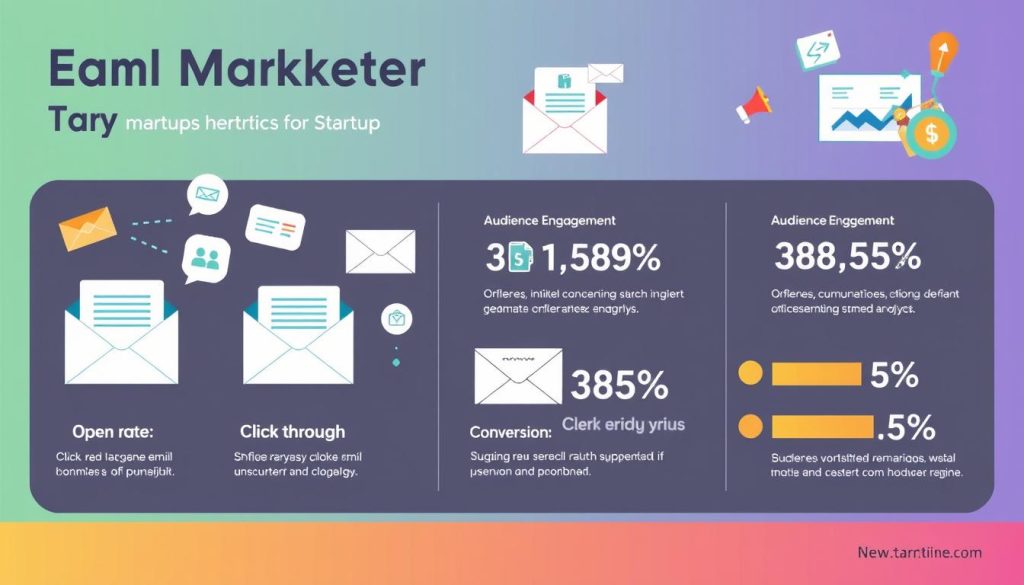In the fast world of startup funding, a great investor pitch is crucial. Gone are the days of generic emails. Today, personalized cold emails are key to getting investor interest and securing funds.
By making your message unique for each investor, you’re not just looking for money. You’re building relationships. This shows you respect their time and are serious about finding the right partners for your startup.
Now, effective fundraising depends on creating pitches that speak to each investor’s interests. This approach makes your pitch more compelling and personal.
Key Takeaways
- Personalized emails improve investor engagement rates
- Tailored pitches show respect and dedication
- Research is crucial for effective personalization
- Align your pitch with investor interests
- Focus on building relationships, not just securing funds
- Craft compelling narratives for each investor
Understanding the Investment Email Landscape
The world of investor relations is changing fast. Startups need to find new ways to reach out to investors. This is because the gap between their ideas and potential investors is getting wider.
Current Trends in Investor Communication
Personalization is now more important than ever. Investors get hundreds of emails every day. To stand out, startups must send emails that really speak to the investor’s interests.
Data and AI are helping startups make their emails more effective. This way, they can grab the investor’s attention better.
Why Traditional Cold Emails Fail
Generic cold emails often don’t work. They lack personal touch and don’t show they’ve done their homework. They also don’t meet the investor’s specific needs.
In today’s competitive world, a one-size-fits-all approach doesn’t cut it. It’s a sure way to fail.
| Traditional Approach | Modern Strategy |
|---|---|
| Generic greetings | Personalized salutations |
| Broad pitch | Tailored value proposition |
| Mass email blasts | Targeted outreach |
| Focusing on startup needs | Addressing investor interests |
The Psychology of Investor Engagement
Knowing what investors want is key. They look for opportunities that fit their area of expertise. They want clear, concise pitches that show they understand the market.
Emotional appeal, combined with solid data, can really help. It can make investors more interested in what you’re offering.
By understanding these aspects, startups can make their emails more compelling. This can help them get the funding they need and build strong relationships with investors.
Crafting Your Unique Value Proposition for Investors
Creating a compelling value proposition is key to attracting investor interest. Your pitch deck and startup valuation form the foundation of this proposition. Let’s explore how to craft a message that resonates with potential backers.
First, identify your startup’s unique strengths. What sets you apart from competitors? This could be innovative technology, a strong market position, or exceptional talent. Highlight these points in your pitch deck to showcase your potential for growth.
Next, translate your startup valuation into a clear, concise message. Investors want to see the potential return on their investment. Use metrics like market size, growth rate, and revenue projections to support your valuation claims.
“A strong value proposition answers the question: Why should I invest in your company over others?”
Consider creating a table in your pitch deck that compares your startup to competitors:
| Feature | Your Startup | Competitor A | Competitor B |
|---|---|---|---|
| Market Share | 15% | 10% | 8% |
| Growth Rate | 30% YoY | 20% YoY | 15% YoY |
| Unique Users | 500,000 | 300,000 | 250,000 |
| Revenue Model | SaaS + Ads | SaaS Only | Freemium |
Remember, your value proposition should be clear, concise, and tailored to each investor’s interests. Use your pitch deck as a visual aid to reinforce your message and make your startup valuation more compelling.
Essential Elements of Personalized Investor Engagement Emails
Creating effective emails for venture capital outreach is key in email marketing for startups. A well-crafted message can lead to a meeting or be ignored. Let’s look at the main parts that make investor emails shine.
Subject Line Best Practices
Your subject line is the first thing they see. It should be short, interesting, and match the investor’s interests. Skip generic phrases and focus on what makes you unique. For example, “AI-Driven Solution Cuts Manufacturing Costs by 30%” grabs attention better than “Seeking Investment for Tech Startup”.
Email Body Structure
The email body should be easy to read. Start with a quick intro, then share your pitch. Mention important stats, market size, and your team’s skills. Use short paragraphs and bullet points for better reading. Remember, investors get lots of emails, so make yours stand out.
Call-to-Action Strategies
End with a clear call-to-action. Say what you want, like a 15-minute call or a review of your pitch deck. Make it simple for the investor to say yes. For example, “Would you be open to a brief call next Tuesday at 2 PM to discuss our AI solution?”
Follow-up Timing
Timing is everything in venture capital outreach. If you don’t get a reply, follow up in 5-7 business days. Keep your follow-up brief and mention your previous email. Being persistent is good, but respect their time and space.
By focusing on these key points, you’ll boost your chances of catching the eye of potential investors through email marketing for startups.
Research and Targeting Methods for Investor Outreach
Getting the right investors is key to raising funds. Knowing how to find the right angel investors can really help entrepreneurs get the money they need.
Building Your Investor Database
Start by making a strong investor database. Go to industry events, network with other entrepreneurs, and use online tools like AngelList or Crunchbase. Keep all the info in a spreadsheet.
Investment Thesis Alignment
Make sure your pitch fits what the investor looks for. Look at what they’ve invested in before. Tailor your pitch to match their interests for a better chance of getting their attention.
Portfolio Analysis Techniques
Looking at an investor’s past investments can tell you a lot. Find out what they usually invest in. Then, show how your startup fits into their investment strategy.
| Research Method | Benefits | Tools |
|---|---|---|
| LinkedIn Networking | Direct connections, personal insights | LinkedIn Premium, Sales Navigator |
| Investment Databases | Comprehensive data, historical trends | PitchBook, CB Insights |
| Social Media Monitoring | Real-time updates, public opinions | Twitter, AngelList |
Using these methods can make your fundraising efforts better. Remember, being personal and relevant is important to stand out.
Leveraging Data Analytics for Email Personalization
Data analytics changes how startups get funding and connect with investors. It lets entrepreneurs send emails that really speak to potential investors. This makes it easier to get the money you need for your business.
Think about knowing what each investor likes before you contact them. Data analytics makes this easy. It helps you see what they’ve invested in before, what they’re interested in, and how much they like to invest.
With this info, you can make your pitch just right for them.
Here’s how data analytics boosts email personalization:
- Identifies investor preferences
- Tracks engagement metrics
- Predicts optimal outreach timing
- Suggests relevant content for each investor
Using data to guide your efforts can really help your startup get funded. Let’s look at some important numbers:
| Metric | Without Data Analytics | With Data Analytics |
|---|---|---|
| Email Open Rate | 15% | 35% |
| Response Rate | 5% | 18% |
| Meeting Conversion | 2% | 8% |
With these insights, you can write emails that really talk to each investor. This not only boosts your funding chances but also builds strong, lasting relationships with investors.
Building Authority Through Strategic Email Content
Making your email content engaging is key for a winning investor pitch. Share your startup’s story, market insights, and achievements to show your worth. This helps build trust and supports your startup’s value.
Storytelling in Investor Communications
A strong story can grab investors’ attention and stick with them. Tell your company’s beginnings, goals, and the problem you solve. Use descriptive words to show how your product changes lives.

Incorporating Market Research
Use solid market research to back up your claims. Share important stats, trends, and growth forecasts for your field. This adds credibility to your pitch and boosts your startup’s value.
- Market size and growth rate
- Consumer behavior insights
- Competitive landscape analysis
Demonstrating Traction Points
Show off your startup’s achievements and progress. Talk about your key metrics, user growth, and earnings. These points prove your business model works and can raise your startup’s value.
“Traction speaks louder than words. Show investors your startup’s momentum, and they’ll be more likely to believe in your vision.”
By mixing storytelling, market research, and achievements in your emails, you craft a strong story. This story builds trust and supports your startup’s value.
Email Templates and Customization Strategies
Creating effective startup to investor bridge email ideas is key to getting venture capital. We’ll look at templates and strategies for different funding stages. This will help you increase your success chances.
Pre-seed Round Templates
Pre-seed emails talk about your startup’s vision and potential. They should be short, focusing on your unique value and early success. Use a friendly tone to connect with potential investors.
Series A Approach Templates
Series A emails highlight your growth and market success. Show off your key metrics, customer feedback, and scaling plans. Make sure your message fits the investor’s interests and investment goals.
Growth Stage Communication
Growth stage emails show your market leadership and plans for growth. Emphasize your competitive advantage, financial outlook, and strategic partnerships. This will attract venture capital.
| Funding Stage | Key Email Elements | Customization Focus |
|---|---|---|
| Pre-seed | Vision, Problem-Solution Fit | Investor’s Interest Areas |
| Series A | Traction, Market Validation | Portfolio Alignment |
| Growth | Market Leadership, Financials | Strategic Value Add |
Always personalize your emails based on the investor’s background and interests. This will make your startup to investor bridge stronger. It will also boost your chances of getting venture capital.
Measuring and Optimizing Email Performance
Effective email marketing is key for startups looking to fundraise. To reach investors, you must track and improve your email campaigns. Let’s look at important metrics and how to optimize them.
Key Performance Indicators
Keep an eye on these vital KPIs to see how your emails are doing:
- Open rates
- Click-through rates
- Response rates
- Conversion rates

A/B Testing Framework
Use A/B testing to tweak your emails. Try out different subject lines, content, and call-to-action buttons. This method shows you what works best with investors, helping your fundraising.
Response Rate Analysis
Study investor responses to understand your email’s impact. Look for trends in positive feedback and tweak your strategy. This approach can greatly improve your fundraising efforts.
“By consistently measuring and optimizing our email campaigns, we saw a 30% increase in investor meetings within three months.”
Remember, email marketing for startups needs constant improvement. Regularly check your metrics and make smart choices based on data. Be open to feedback from investors for the best outcomes.
Common Pitfalls and How to Avoid Them
Many entrepreneurs face challenges when reaching out to angel investors. One major mistake is sending the same email to everyone. This method usually fails in investor relations. It’s better to customize your message for each investor’s interests and background.
Another common error is using too much technical jargon. Keep your language simple and clear. Angel investors are busy and value straightforward communication. Explain your business idea and its potential in simple terms.
Don’t forget to follow up. Many give up after one email without a response. In investor relations, being persistent is key. Set up a polite follow-up schedule. This shows your dedication and can lead to better engagement with angel investors.
To increase your chances of getting noticed, avoid these mistakes. Remember, effective investor relations are about building relationships, not just asking for money. Make your emails personal, clear, and persistent for the best results.
FAQ
How can I make my cold emails to investors more personalized?
To make your cold emails more personal, start by researching the investor’s past investments and interests. Tailor your message to match their investment style. Use their name and mention recent news about them to show you’ve done your homework.
What should I include in my email subject line to catch an investor’s attention?
Your subject line should be short, interesting, and relevant. Include your startup’s name and a key achievement. For example, “AI-powered fintech [Your Company] – 300% YoY growth, seeking Series A” or “[Investor Name], interested in revolutionizing healthcare logistics?”
How long should my investor pitch email be?
Keep your email brief and focused. Aim for 200-300 words or 3-4 short paragraphs. Introduce your startup, highlight its unique value, and mention key achievements. End with a clear call-to-action to get a meeting.
How often should I follow up with investors after sending an initial email?
Follow up 5-7 business days after your first email if you don’t get a response. If still no reply, send another follow-up after a week. Be respectful and avoid being too pushy. If no response after two tries, move on to other investors.
What are some effective call-to-action strategies for investor emails?
Effective CTAs include asking for a call or meeting, offering more information, or inviting to a demo. Choose a CTA that fits your email’s purpose and the investor’s interest level.
How can I demonstrate traction in my investor emails?
Show traction by highlighting key metrics and achievements. This could be revenue growth, partnerships, or product milestones. Choose the most impressive points that match your startup’s stage and the investor’s interests.
How do I research potential investors to target?
To research investors, use platforms like Crunchbase and AngelList. Analyze their portfolio and read their blogs and interviews. Attend events and network to gather insights. Use tools like Signal by NFX to track your research.
What’s the best way to showcase my startup’s valuation in an email?
Discuss valuation by focusing on what drives your startup’s value. Mention revenue growth, market size, and competitive advantages. If you’ve had previous funding, mention it to add credibility. Be ready to justify your valuation with data if asked.
How can I use data analytics to improve my investor emails?
Use data analytics to track open rates and click-through rates. A/B test different formats and CTAs. Analyze response rates to refine your targeting. Use tools like Mailchimp to gather and interpret data. Segment your list for more targeted outreach.
What are some common pitfalls to avoid in investor engagement emails?
Avoid sending generic emails, using too much technical jargon, and making unrealistic claims. Focus on the business opportunity, not just the product. Clearly state what you’re asking for and keep your email concise. Proofread for errors and include a clear call-to-action.


